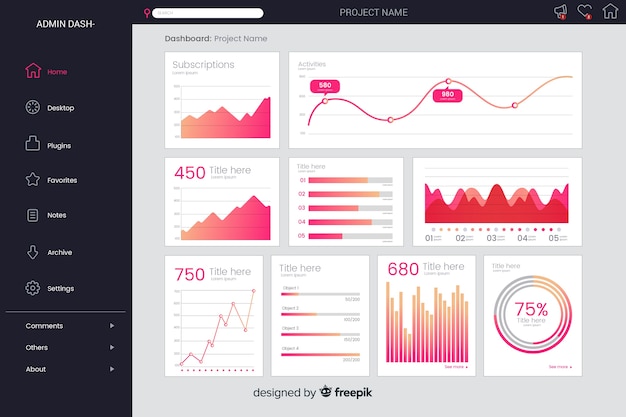Building Scalable Web Portals: From Design to Deployment

Photo by freepik @ freepik
In today’s digital landscape, web portals play a crucial role in connecting users with information, services, and applications. Whether for e-commerce, enterprise solutions, social networking, or educational platforms, building a scalable web portal ensures long-term success and adaptability to growing user demands. This article provides a comprehensive guide to developing scalable web portals, covering design, architecture, development, deployment, and maintenance.
Understanding Web Portals
A web portal is a specially designed website that provides users with personalised access to a variety of resources, including content, applications, and services. Unlike static websites, portals often require user authentication, dynamic content management, and integration with third-party services.
Key Features of a Web Portal:
- User Authentication & Role-Based Access
- Personalised Content & Dashboard
- Integration with External Services & APIs
- Scalability & High Availability
- Security & Data Privacy Measures
- Responsive & Intuitive UI/UX Design
Planning & Design Considerations
Before diving into development, proper planning and design are crucial for a scalable and efficient web portal.
1. Define Objectives & User Requirements
Understanding the target audience and their needs is the foundation of web portal development. Define clear business goals, identify potential users, and list the core functionalities your portal should provide.
2. Choose the Right Architecture
Scalability starts with a robust architecture. The architecture should allow for smooth data flow, easy maintenance, and future expansion.
- Monolithic vs. Microservices Architecture: Microservices are preferable for scalability, allowing independent services to be managed separately.
- Cloud-Native Design: Cloud solutions like AWS, Azure, or Google Cloud enhance scalability and performance.
- Load Balancing & Caching: Use techniques like CDN (Content Delivery Network) and caching layers (Redis, Memcached) to improve response times.
3. UI/UX Design Principles
A well-designed user interface enhances engagement and usability.
- Responsive Design: Ensure a seamless experience across devices.
- Minimalist & Intuitive Navigation: Simplify the user journey.
- Accessibility Compliance: Follow WCAG guidelines to make the portal inclusive.
- Performance-Oriented Frontend: Utilise modern frameworks like React.js, Vue.js, or Angular.

This may interest you: 5 Issues That May Be Hurting Your E-commerce Website’s Sales
Development Process
Once the planning and design phase is complete, the development process can commence.
1. Technology Stack Selection
Choosing the right technologies affects performance, maintainability, and scalability. Common choices include:
- Frontend: React.js, Vue.js, Angular
- Backend: Node.js, Django, Flask, Ruby on Rails
- Database: PostgreSQL, MySQL, MongoDB, Firebase
- Hosting & Cloud Services: AWS, Azure, Google Cloud, Vercel
2. Backend Development & API Integration
The backend is responsible for processing business logic, managing data, and handling authentication.
- RESTful or GraphQL APIs for efficient communication.
- Authentication Mechanisms: OAuth, JWT, or session-based authentication.
- Microservices Implementation for better scalability.
3. Frontend Development
The frontend should be dynamic and optimised for performance.
- Server-Side Rendering (SSR) & Static Site Generation (SSG) for improved load times.
- Component-Based Architecture using frameworks like React.
- Progressive Web Application (PWA) capabilities for enhanced user experience.
Deployment Strategies
After development, a well-planned deployment strategy ensures smooth operations and scalability.
1. Continuous Integration & Continuous Deployment (CI/CD)
Automating the deployment process reduces downtime and ensures stable releases. Tools like Jenkins, GitHub Actions, and GitLab CI/CD help streamline the process.
2. Containerisation & Orchestration
- Docker: Enables containerised applications for consistent deployment.
- Kubernetes: Manages containerised applications at scale.
- Serverless Deployments: Services like AWS Lambda or Firebase Functions reduce infrastructure management efforts.
3. Load Balancing & Auto-Scaling
- CDN Implementation: Services like Cloudflare and AWS CloudFront enhance global performance.
- Horizontal Scaling: Distribute workloads across multiple servers.
- Database Optimisation: Sharding, indexing, and caching improve database performance.
Security Best Practices
Security is a crucial aspect of web portal development. Implementing security measures ensures user data protection and regulatory compliance.
1. Secure Authentication & Authorisation
- Implement Multi-Factor Authentication (MFA).
- Use OAuth 2.0 or JWT for secure API access.
2. Data Protection & Encryption
- Encrypt sensitive data using AES or RSA encryption.
- Use SSL/TLS Certificates for secure connections.
3. Prevent Common Security Threats
- Implement protection against SQL Injection, Cross-Site Scripting (XSS), and Cross-Site Request Forgery (CSRF).
- Use Web Application Firewalls (WAF) for added security.
Read more: How To Build A Culture Of Cybersecurity For Your Business
Performance Optimisation
Ensuring a fast and responsive web portal enhances user experience and retention.
1. Database Optimisation
- Indexing & Query Optimisation reduces response times.
- Data Caching with Redis or Memcached minimises database load.
2. Image & Asset Optimisation
- Use lazy loading to defer image loading.
- Compress images using WebP or AVIF formats.
3. Code Minification & Compression
- Minify CSS, JavaScript, and HTML files.
- Enable Gzip or Brotli compression.

Monitoring & Maintenance
A well-maintained web portal ensures stability, security, and efficiency over time.
1. Log Management & Error Handling
- Implement logging tools like ELK Stack (Elasticsearch, Logstash, Kibana) or Splunk.
- Set up real-time error tracking using Sentry or Rollbar.
2. Regular Security Audits
- Conduct penetration testing to identify vulnerabilities.
- Keep dependencies updated to prevent exploits.
3. User Feedback & Iteration
- Use analytics tools like Google Analytics and Hotjar to track user behavior.
- Continuously improve the portal based on feedback and usage insights.
Building a scalable web portal requires meticulous planning, the right technology stack, secure authentication, and ongoing performance optimisations. By implementing best practices in architecture, development, security, and deployment, businesses can ensure a robust, future-proof portal that delivers a seamless user experience. Whether developing an enterprise portal or a consumer-facing application, the key lies in adaptability and continuous improvement. By focusing on scalability from the outset, your web portal can efficiently handle growth and evolving user needs over time.
Leaderonomics.com is an advertisement-free website. Your continuous support and trust in us allow us to curate, deliver and upkeep the maintenance of our website. When you support us, you enable millions to continue reading for free on our website. Will you give it today? Click here to support us.
Business
Tags: Abundance Mindset, Building Functional Competencies, Digital, Identity, Intelligence Development, Science & Tech
Matthew Lynch is a seasoned brand strategist and writer, currently serving as the Manager of Brand Management at Cude Design. With a keen eye for both online and offline brand reputation, he specializes in crafting compelling narratives that drive brand growth and audience engagement. His expertise lies in developing strategic content, enhancing brand visibility, and ensuring a strong market presence. Passionate about storytelling and brand identity, Matthew blends creativity with analytical insight to shape impactful brand experiences.







